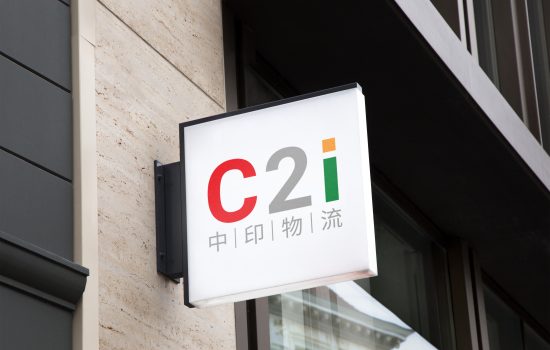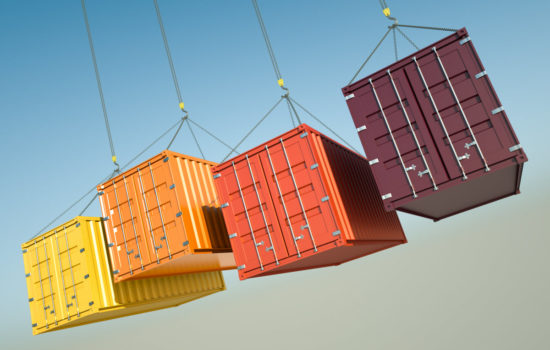
The article from the general administration of customs of the People’s Republic of China: http://zhanjiang.customs.gov.cn/customs/302427/302446/302451/zymyhbhgtgjs/yd/399761/index.html
Import and export goods can be imported to India or exported from India to other countries and regions through three channels of sea, air or land transportation.Import and export procedures depend on the mode of import and export.The procedures mentioned in this paper mainly refer to the import and export procedures through sea, air or land transportation.
Informationization of customs work: the customs of Delhi airport and mumbai port have realized informationization.In the informationized customs, manifest declaration and import and export declaration declaration must be submitted electronically.
In India, importers and exporters are not allowed to enter the country unless they have obtained the Importer and Exporter Code issued by the general administration of foreign trade of India (DFGT).But imported articles do not need IEC code.
The relevant import formalities shall be handled by the person in charge of the means of transport (carrier), the importer and his agent.
A, import
(1) the import goods arrived at the customs territory of India
The carrier shall declare the import manifest (by sea, air) or manifest (by land) before the arrival of the goods.Cargo manifest must be declared to customs 12 hours before arrival.Failure to report within the prescribed time limit may result in a fine of up to rs 50,000.If the special GST officer considers that the carrier’s failure to report within the specified period is justified, no penalty may be imposed.
In the customs with EDI system, declaration can be made electronically.
Declaration and customs clearance of import goods
1.Declare means
After unloading (usually within 3 days), the importer or his agent must fill in the Bill of Entry in quadruplicate.The first and second are retained by the customs, the third by the importer, and the fourth by the bank where the importer pays the tax.Otherwise, high detention fees must be paid to the port authority or the airport authority.
If the goods are declared through the electronic data interchange (EDI) system, it is not necessary to fill in the paper import declaration form, but the detailed information required by the customs to process the application for customs clearance is recorded in the computer system, and the import declaration form is automatically generated by the EDI system.
2.Documents required
– signed invoice
– packing list
– ocean bill of lading or bill of lading/air waybill
– completed GATT declaration form
– declaration form from importer or its customs agent
– approval (available when required)
– l/c/bank draft (available when required)
– insurance documents
– import licence
– industry license (available when required)
– test report (when the goods are chemicals)
– provisional tax exemption
– original DEEC/DEPB
– catalogue, detailed technical specifications, relevant literature (when the goods are mechanical equipment, mechanical equipment parts or chemicals)
– single price of mechanical equipment parts
– certificate of origin (when preferential tariff rates apply)
– no commission statement
3. Pre-declaration, modification of customs declaration form and green channel
In order to achieve fast customs clearance, the relevant laws of India allow pre-declaration 30 days before the arrival of the goods.Such advance declaration shall be deemed valid if the means of transport carrying the goods arrives within 30 days from the date of submission.
If the declaration documents and documents are found to be wrong or need to be modified for other reasons (such as classification error, typing error, change of loading or unloading plan, etc.), the amendment shall be approved by the vice chairman or assistant chairman of the central committee of excise duty and customs (CBEC) of India.The customs will only approve the amendment if it is confirmed that there is no fraudulent intent.The application for amendment must be based on the documents submitted at the time of clearance rather than the documents supplemented after clearance.
Some importers have obtained the green channel to facilitate customs clearance.When filling in the import declaration form, such importer should indicate that he can enjoy the green channel to facilitate customs clearance.When customs clearance, the goods can be cleared without routine inspection, and the inspection rate of the goods is greatly reduced, but other customs clearance procedures are the same with general goods.
4.Pay the tariff
Upon receipt of the import declaration, the customs will compare it with the import manifest or manifest, examine and evaluate it.Declaration is consistent and complete, customs will accept declaration.In general, the tariff rate at the date of acceptance is the applicable tariff rate.Some goods may require further documentation or examination (in the presence of the importer or his agent) to be properly taxed.Import duties can be transferred to the customs account through the current account between the importer and customs, or paid by deposit or sight draft at the designated bank by filling in the tr-6 Challan form.Customs in different places have designated different Banks to collect customs duties, so before paying customs duties, please be sure to confirm which bank you should deposit the money into.Import duties shall be paid within 5 working days (excluding holidays) from the date when the import declaration is returned to the importer or his agent for duty payment.
For goods imported under special schemes such as the certificate of exemption scheme or the export-oriented unit scheme, a security deposit shall be provided to the customs.If no deposit is provided, the importer shall pay the corresponding tariff.The amount of the deposit shall be equal to the amount of customs duties payable on the imported goods.Bank guarantee should be provided as well as margin.The amount of bank guarantee depends on the type of importer (large trading company, general trading company, etc.).
5.inspection
If the goods have been examined before the payment of customs duties, the goods can be directly extracted after the payment of customs duties.If the inspection is not carried out before customs duties have been paid, it is reported to the inspectors and, if necessary, will be carried out.Customs sometimes randomly inspect goods.The goods may not be picked up until the inspectors issue a release order.
6.release
After inspection, if the goods are not prohibited and customs duties have been paid, the customs officer will issue a “release” order.
Second, the export
(1) exit permit
Loading can only be done with exit clearance.The carrier may apply for an exit permit 14 days in advance for manifest declaration.The exporter or carrier shall not load the cargo until he receives the export manifest or the export declaration approved by the customs.No declaration of manifest is required for postal items, but customs approval is also required.
Declaration of export manifest and manifest
All export manifests or manifest shall be submitted to the customs before shipment and shall contain a declaration of authenticity signed by the person in charge of the means of transport.The information and documents to be submitted are similar to the import manifest, including exporter, carrier’s name and name, consignee, invoice number, packing details, name and description of goods, quantity, fob, etc.When it needs to be modified, it can be modified only after the customs confirms that there is no fraudulent intention.If the means of transport is carrying only passengers’ luggage, there is no need to declare.Upon receipt of the declaration, each manifest or manifest will be numbered.
(3) procedures to be completed by the exporter in advance
1.Apply for business identity authentication number (BIN) from the state administration of foreign trade;
2.Opening a current account with a designated bank to receive export tax rebates;
3.If the export is under the “export promotion plan”, the license number, pre-license number and DEPB number must be registered with the customs.
(4) document requirements for declaration of export customs declaration
1.Export manifest (by sea or air) or export manifest (by land) in quadruplicate;
2.4 copies of packing list;
3.4 copies of invoice;
4.4 copies of the export contract;
5.Certificate of origin or certificate of pre-shipment inspection;
6.The policy;
7.The l/c.
8.RBI format GR/SDF form;
9.BIN number certification letter;
10.If the goods ARE subject to special consumption tax, the form of are-1 or are-2 issued by the factory should be submitted.
(5) to collect customs duties
After customs examination, the taxable goods shall be taxed through the designated bank or the current account between the exporter and the customs.
(6) inspection
After the customs review, the cargo information will be submitted to the inspectors to determine whether the inspection is needed.The goods to be inspected will generally be moved to the inspection area for inspection to confirm whether the goods are prohibited goods, whether the single goods are consistent, whether the application for export tax refund is in accordance with the regulations, etc.
(7) release
If the goods are not prohibited goods and the corresponding duties have been paid, the customs shall issue a “permission to load” or “permission to export” order to release the goods




